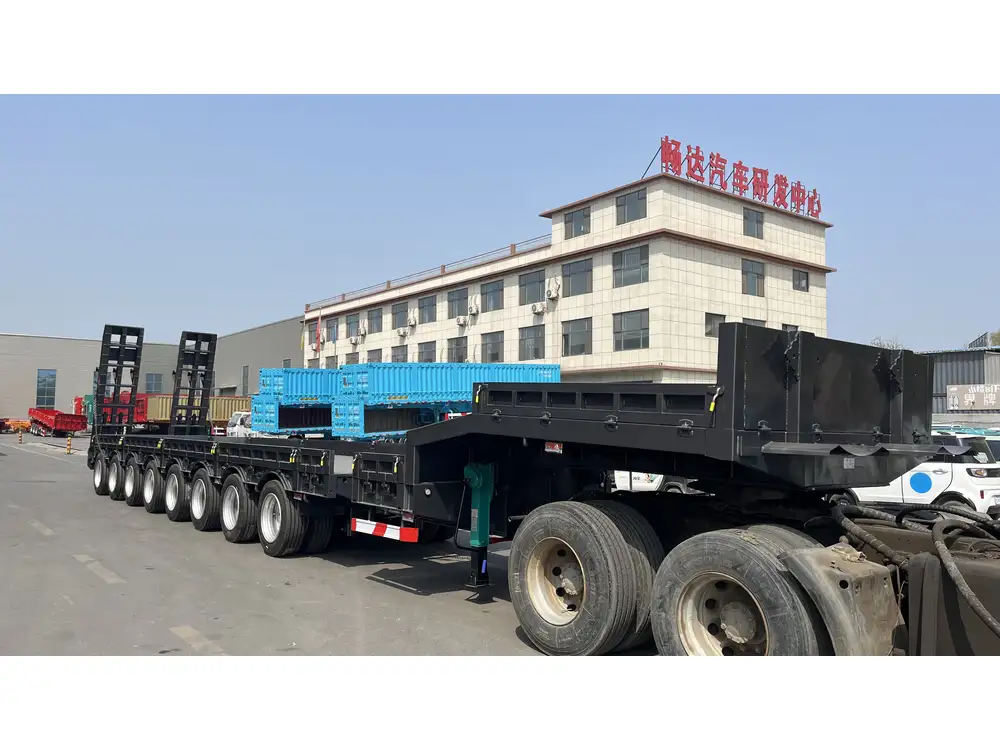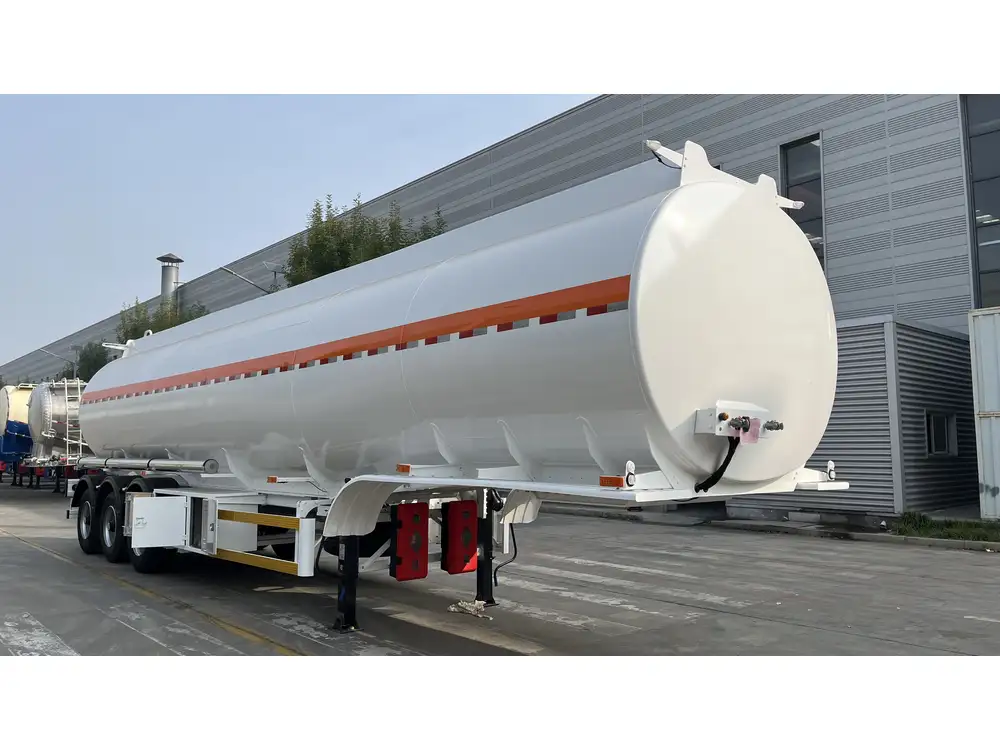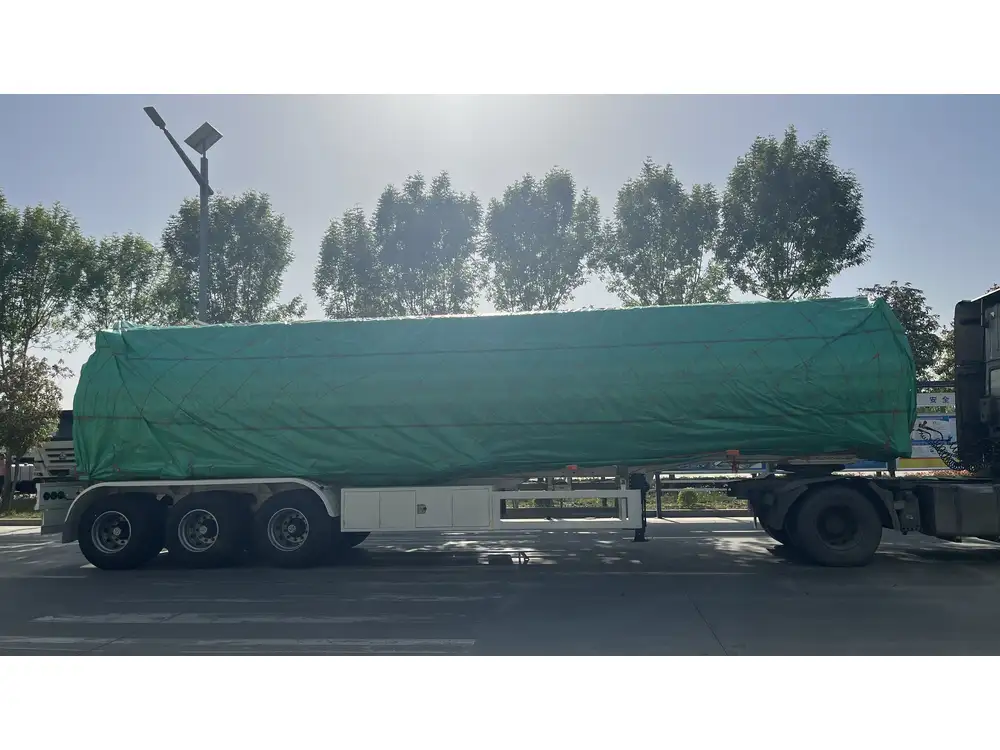When it comes to transport logistics, utilizing semi-trailers for moving heavy loads via bridges raises a question that reverberates through the freight transportation industry. Can you use a semi-trailer for a bridge? This article delves into the complexities of this inquiry, examining the implications, regulations, and practical considerations needed for safe and efficient transportation.
Understanding the Basics: Semi-Trailers and Bridges
What is a Semi-Trailer?
A semi-trailer is a type of trailer that cannot stand alone and requires a tractor unit to support the front. Unlike full trailers, which have wheels at both the front and back, semi-trailers typically rest on the back of the truck—allowing for greater maneuverability and weight distribution.

The Functionality of Bridges
Bridges serve as essential infrastructures, designed to bear the weight of vehicles traversing them while ensuring safety and durability. Different types of bridges, such as beam bridges, arch bridges, and suspension bridges, are constructed with varying load capacities based on design and materials.
Analyzing the Load Capacity of Bridges
Load Rating Factors
To determine whether a semi-trailer can safely cross a bridge, we need to consider:
The Design Load: Each bridge has a design load that signifies the maximum weight it can accommodate. This is typically based on standard measurements like HS-20 or HL-93, which accounts for the truck’s weight plus any cargo.
Vehicle Weight and Configuration: A typical semi-trailer can weigh between 10,000 to 30,000 pounds depending on its configuration, while the total weight can soar to over 80,000 pounds when fully loaded. Understanding the weight distribution and axle configuration becomes crucial when assessing compatibility with bridge weights.

Federal and State Regulations
The Federal Highway Administration (FHWA) establishes guidelines for weight limits on interstate highways and bridges. Each state has additional regulations which must be adhered to for larger loads. Violating these regulations can not only compromise safety but also incur hefty fines and legal repercussions.
Engineering and Design Considerations
Bridge Design
Bridges designed to accommodate heavy traffic, such as interstate highways, typically feature robust engineering that allows for the passage of semi-trailers. However, older bridges may not adhere to current standards.

Bridge Inspection Protocols
Regular inspections are key. It’s imperative to ensure that the bridges in question align with the latest standards and tests for load-bearing capacity. This involves looking at:
- Structural integrity
- Previous wear and tear
- Past crossing loads
Weight Distribution
Axle Configuration
Understanding how weight is distributed across the axles can significantly influence whether a semi-trailer can travel across a bridge. The more axles a vehicle has, the better the weight distribution; this aids compliance with weight limits set by both federal and state highways.
| Axle Configuration | Typical Weight Bearing Capacity (lbs) |
|---|---|
| 2 Axles | Up to 34,000 |
| 3 Axles | Up to 42,000 |
| 4 or more Axles | Up to 80,000 or more |

Practical Usage Scenarios
Long-Distance Hauling
When long-distance hauling involves utilizing bridges, careful planning is essential. Logistics companies must translate detailed routes focusing on bridges that can bear the load without exceeding limits.
Route Planning Tools
Route planning software can be invaluable in assessing which bridges can accommodate semi-trailers based on weight, height, and possible restrictions. Utilizing tools such as:
- GPS Route planners
- Weight limit databases
- State Department of Transportation resources
This technology streamlines the decision-making process, reducing complexities and enhancing efficiency.

Temporary Bridge Solutions
In some cases, utilizing a semi-trailer may necessitate the implementation of temporary bridge solutions. For instance:
Portable Bridges: A semi-trailer can, in certain instances, deliver modular components for constructing temporary bridge structures.
Bridge Reinforcement: Engineering teams may devise a strategy to temporarily reinforce a bridge while allowing semi-trailers to cross while adhering to safety guidelines.
Special Permits for Oversized Loads
When it becomes necessary to transport weight that exceeds standard limits for bridge traversal, special permits must be obtained. These permits entail:
- Comprehensive route analysis
- Advanced notifications to authorities
- Safety measures for weight disparities
The Environmental and Economic Impact

Emissions and Traffic Concerns
Heavy trucks traversing bridges can cause significant wear and tear not only on the bridges themselves but also on the environment:
- Increased emissions: Large vehicles result in higher CO2 emissions, contributing to air quality deterioration.
- Traffic congestion: Oversized loads can create bottlenecks, leading to reduced productivity and increased delivery times.
Cost vs. Efficiency
Weighing the costs associated with special permits, routing adjustments, and potential delays against the benefits of using semi-trailers across bridges is essential for companies focusing on both profitability and sustainability.
| Factors to Consider | Cost Implications | Efficiency Gains |
|---|---|---|
| Special Permits | Permit fees, additional documentation | Ability to access remote locations |
| Altered Routing | Additional mileage and time | Efficient load placement in tight schedules |
| Structural Assessments | Inspection costs | Enhanced safety and reduced liability |
User Experience and Safety Measures

Training and Compliance
Ensuring that drivers are adequately trained on bridge crossings is non-negotiable. This may involve:
- Safety briefings: Discussing relevant weight restrictions, bridge inspection reports, and standard procedures for crossing.
- Route familiarization: Ensuring drivers are aware of any known challenges and alternative routes should the need arise.
Efficient Communication
Communication protocols with logistics teams, traffic controllers, and bridge authorities can ensure seamless operations that prioritize safety.
- Regular updates to all parties involved regarding real-time conditions and potential hazards.
Final Thoughts
Utilizing a semi-trailer for bridge crossings is not merely a logistical challenge but a multi-faceted consideration intertwined with regulations, engineering principles, safety protocols, and economic factors. It requires meticulous planning and adherence to loads and safety standards to ensure both efficiency and adherence to legal guidelines.
To navigate this terrain effectively, stakeholders must commit to regular education and training, route analysis, and clear communication channels—balancing operational efficiency with safety and sustainability needs. Whether it’s moving goods across state lines or managing local deliveries, staying informed is paramount to ensuring that the questions, “Can you use a semi-trailer for a bridge?” and various scenarios surrounding this remain comfortably and staunchly affirmative.



